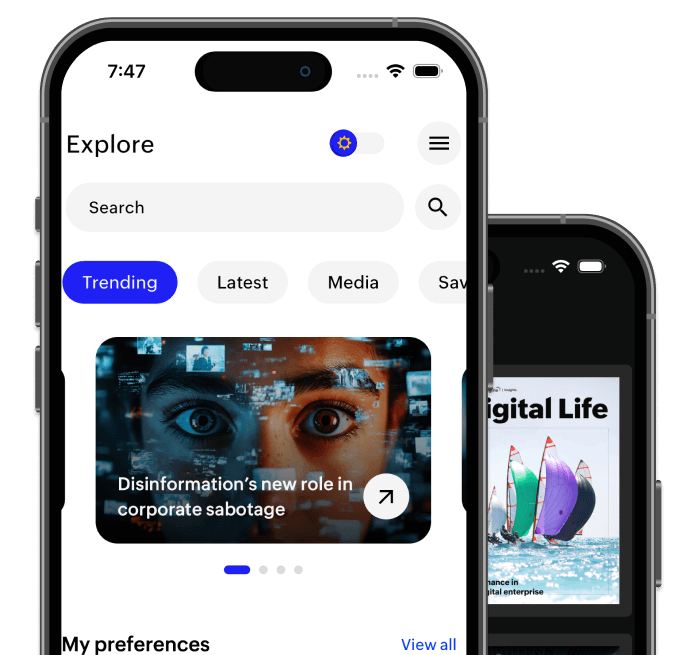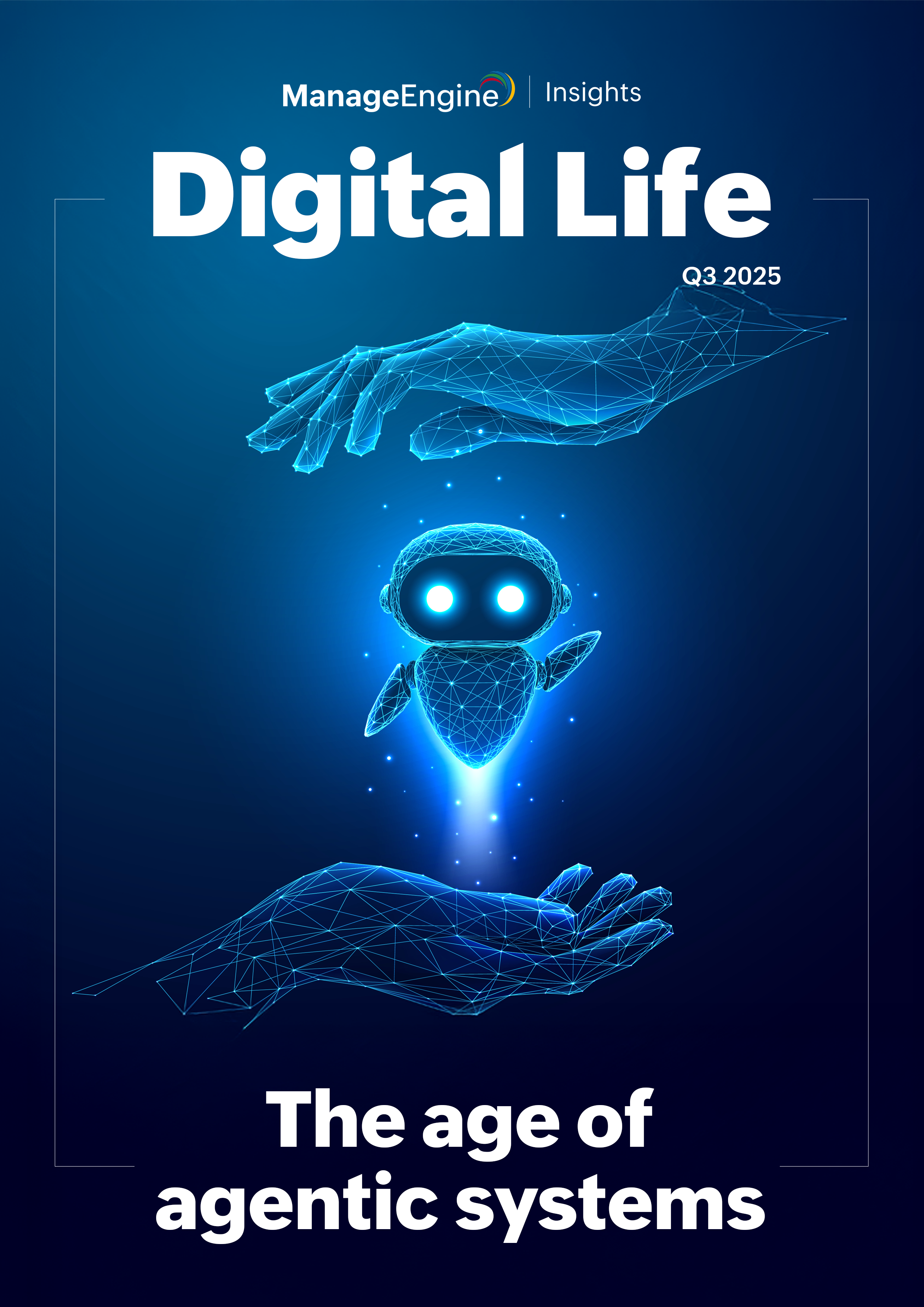Innovation in the enterprise world isn’t an option anymore—it’s the lifeline. As AI, automation, and cloud technologies reshape traditional business models, companies that fail to adapt will be left behind. However, many organizations are still falling behind despite a widespread adoption of digital tools.
While 74% of enterprises prioritize digital transformation, only 35% of those transformations succeed. The issue isn’t lack of investment, as global spending on digital transformation technologies is expected to reach $3.9 trillion by 2027. The real challenge lies in leadership’s inability to integrate technology effectively with their business strategy.
This isn’t about keeping pace with technological advancements; it’s about reshaping industries through digital-first leadership. What makes these leaders different?
Let’s explore the traits that define leaders who are not just navigating digital disruption but using it as a catalyst for growth.
1. Customer obsession. The secret sauce of digital success.
Think about some of the most innovative tech companies today—Zoho, Amazon, and Tesla. What do they all have in common? They don’t just build products. They obsess over their customers.
Great digital leaders flip the script. Instead of saying, “How can we digitize our business?” they ask, “What does our customer actually need?” Then, they work backward to create digital-first solutions that deliver real value.
Amazon is the poster child for this approach. Jeff Bezos famously insisted on leaving an empty chair at executive meetings to represent the customer, reinforcing that every decision should prioritize their needs. From one-click purchases to same-day delivery, Amazon’s success isn’t about fancy tech; it’s about using digital tools to make customers’ lives easier.
Digital leaders understand this: Technology isn’t the star of the show—the customer experience is.
2. Hire smarter people. Then get out of their way.
Here’s a brutal truth: If you’re always the smartest person in the room, you’re in the wrong room.
Great digital leaders surround themselves with experts who challenge them, bring fresh perspectives, and push boundaries. They’re not intimidated by talent—they cultivate it. More importantly, they give their teams the freedom to experiment, fail fast, and innovate without fear.
Microsoft’s turnaround under Satya Nadella is a perfect example. When he took over as CEO, Microsoft was stagnant and stuck in an old-school way of thinking. Instead of doubling down on legacy strategies, Nadella hired the best minds in AI, cloud computing, and enterprise software and gave them room to innovate. The result? Microsoft went from a struggling giant to one of the world’s most valuable tech companies.
Lesson learned: Hire great people, trust them to do what they do best, and watch your company transform.
3. Build teams that can handle chaos.
Digital transformation is messy. It’s unpredictable. It’s full of setbacks. If your team can’t handle uncertainty, they’ll fold the second things get tough.
The best digital leaders build resilient, emotionally intelligent teams that don’t just survive disruption—they thrive in it.
- They collaborate and don’t compete. Digital success isn’t a solo sport.
- They challenge the status quo. If you want real innovation, you need people who question everything.
- They don’t fear failure. Instead, they see it as a step toward something bigger.
A great example of this is Spotify’s approach to innovation. The company organizes its workforce into agile squads, or small cross-functional teams, that operate independently but collaborate closely. Each squad is empowered to experiment, iterate rapidly, and pivot without waiting for top-down directives. This structure has enabled Spotify to continuously innovate its music recommendation algorithms, personalize user experiences, and expand into podcasts—all while staying ahead in the competitive streaming industry.
If your team isn’t comfortable with change, they won’t be comfortable in the digital age.
4. Embrace the tech. Or get left behind.
Let’s be real—some leaders still think of AI, blockchain, and cloud computing as things the IT team handles. That mindset is a one-way ticket to irrelevance.
Today’s best leaders geek out over technology. They don’t have to be coders, but they do need to understand how emerging tech can be leveraged for competitive advantage. AI isn’t just for chatbots. Blockchain isn’t just for crypto. Cloud computing isn’t just a storage solution. These are strategic tools that can reshape entire industries.
Alibaba’s leadership exemplifies this mindset. Facing challenges in late 2022, including regulatory scrutiny and declining market shares, the company recognized the urgency to pivot towards AI. Over two years, Alibaba ramped up AI investments, developed advanced language models like Qwen, and formed key partnerships, such as a collaboration with Apple. This strategic shift rejuvenated the company, revitalizing investor confidence and significantly boosting its share price.
In February 2025, the company announced plans to invest approximately $52 billion in AI and cloud computing over the next three years, marking its most significant commitment to AI-driven infrastructure to date.This strategic investment underscores Alibaba’s dedication to integrating cutting-edge technologies across its operations, ensuring it remains at the forefront of the rapidly evolving digital landscape.
Digital leaders aren’t just aware of technology—they actively seek out ways to integrate it into every part of their business.
5. Smart leaders take advantage of blurring industry lines.
The old industry boundaries are gone. Banks are becoming tech companies. Retailers are investing in AI. Healthcare is moving into digital-first services. The most forward-thinking leaders don’t see themselves as part of a single industry; they see opportunities everywhere.
Take Tesla, for example. Initially known for its electric vehicles, Tesla has expanded into energy generation and storage solutions, including solar panels and battery systems like the Powerwall and Megapack.This strategic pivot has allowed Tesla to not only lead in electric vehicles but also make significant strides in the clean energy market.
By Q3 2024, Tesla’s energy storage division soared to nearly $2.4 billion in revenue, reflecting an impressive 52% surge compared to the previous year. This impressive growth in the energy division highlights the shifting boundaries between industries like automotive and energy.
Digital leaders don’t just optimize existing processes. They redefine entire markets.
6. Take more risks. Stop playing it safe.
Here’s a question: When was the last time your company tried something completely new?
Most companies are terrified of failure. Instead, they play it safe, stick to what they know, and wonder why they’re falling behind. The most successful digital leaders do the opposite. They create a culture where taking calculated risks is not only encouraged but expected.
Netflix is a prime example. It started as a DVD rental company and could have easily stayed in that lane. Instead, its leadership bet on streaming, even when digital streaming wasn’t mainstream, and that risk paid off. Netflix then went further by investing in original content to stand out. The next bold move? AI-driven content recommendations, which personalized the viewing experience, retaining and attracting millions of subscribers.
Netflix didn’t just react to change—they created it. The companies that fear failure the most are often the ones that fail first. The key isn’t avoiding risk, it’s managing it intelligently.
Final thoughts
In a world obsessed with metrics, the best leaders know the future isn’t written in numbers—it’s made in moments of discomfort. Innovation isn’t about playing it safe; it’s about stepping into the unknown and asking your team to solve what can’t be predicted.
So, are you the leader who follows the script, or the one who tears it up and writes a new one? Innovation lives in the risks, the challenges, and the ideas others said were impossible.
The world isn’t waiting for you to catch up—it’s waiting for you to leap ahead. Ready to make the jump?











